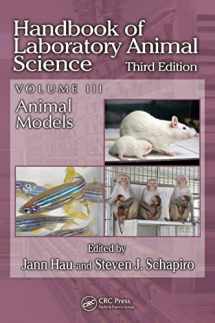
Handbook of Laboratory Animal Science, Volume III: Animal Models
Book details
Summary
Description
While replacing and reducing the use of laboratory animals are integral parts of the 3Rs―replace, reduce, refine―which form the cornerstones of laboratory animal science, biomedical research involving animals remains absolutely essential for the advancement of the medical, veterinary, agricultural, and biological sciences. Building upon the bestselling previous edition, the Handbook of Laboratory Animal Science, Volume III, Third Edition: Animal Models complements volumes I and II of the third edition by completing the task of providing a comprehensive overview of animal models in all biomedical disciplines.
The three Rs have been integrated throughout this handbook to promote efficient and humane experimental work with animals. Written by international experts, each chapter focuses on an important subdiscipline of laboratory animal science and can be used as a stand-alone text. This volume contains new chapters for six additional disease animal models: spinal cord injury, cardiovascular diseases, sudden infant death syndrome, developmental disorders, eye diseases, and human cancer. It also presents a new chapter on applying reduction and refinement to animal models.
This handbook can be used for undergraduate and postgraduate laboratory animal science courses, and as a handbook for scientists who work with animals in their research, for university veterinarians, for regulators, and for other specialists in laboratory animal science.


We would LOVE it if you could help us and other readers by reviewing the book
Book review



